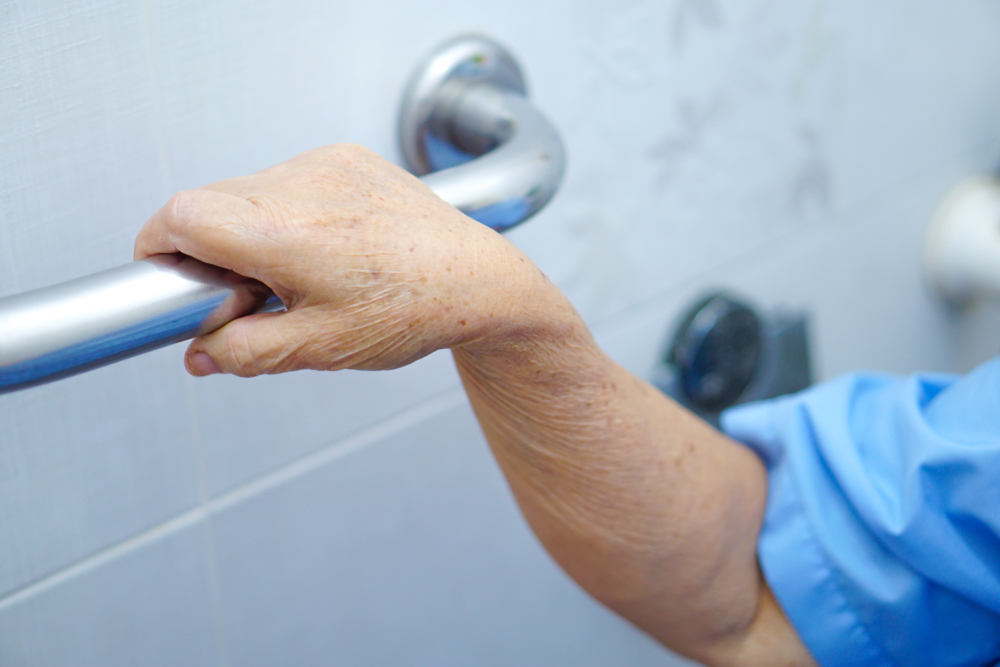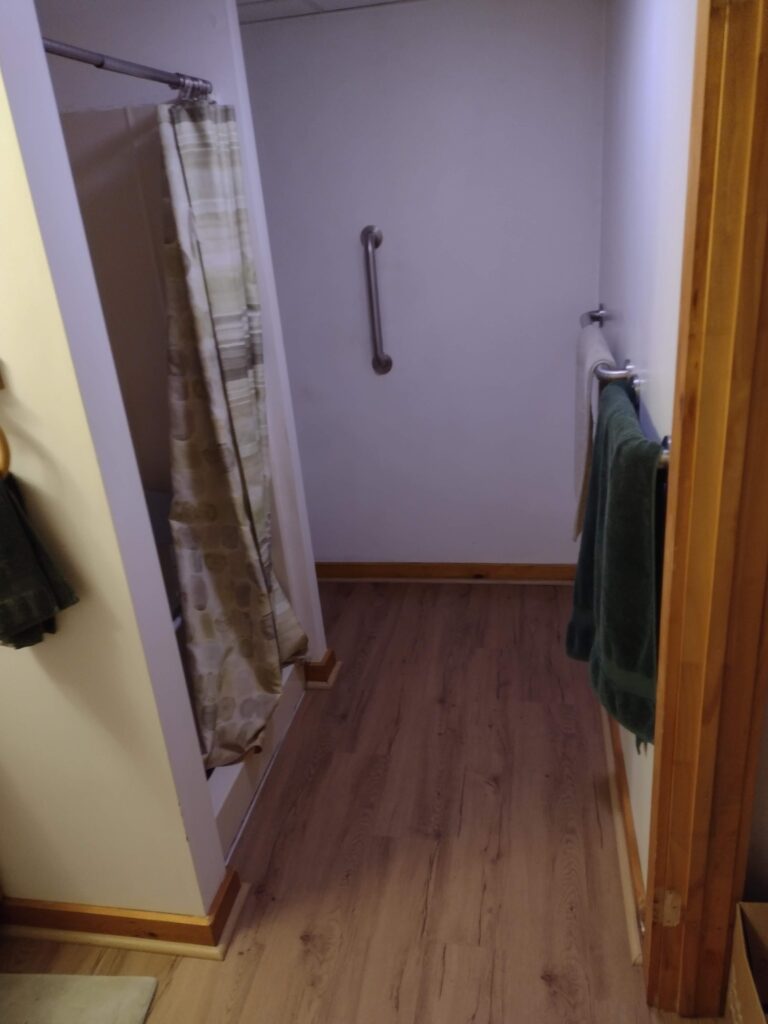Where Should Grab Bars Go in My Bathroom?

Every year in America, hundreds of thousands of people are rushed to the emergency room for injuries sustained in a bathroom accident. Of these emergency room visits, four out of five are caused by potentially preventable slips or falls.
One way to increase bathroom safety as you age in place is by installing grab bars. When properly mounted and strategically placed, these balance and mobility aids can help avoid an unexpected trip to the ER.
Keep reading to learn more about grab bars in the bathroom and where they should go!
What are Grab Bars?
Grab bars are solid metal bars that can be installed in any area of your home where you might need a stability aid. They are particularly effective at preventing accidental slips or falls in bathrooms, which are often moist and have many hard surfaces.
Some of the uses of grab bars are lowering or lifting oneself from a seated position, providing stability in hallways or stairways, and aiding in balance in areas where someone might stand for more extended periods of time, like a kitchen or bathroom sink.
What Are the Types of Grab Bars?
There are two basic types of grab bars: permanently installed grab bars and suction cup grab bars, which are often used as a temporary solution.
Permanently Installed Grab Bars
As the name implies, permanently installed grab bars are permanently attached to surfaces and cannot be easily removed. These grab bars offer the most stability, as they are engineered to bear a person’s full weight.
Depending on your needs, there are several options for permanently installed grab bars, which include:
- Standard straight grabs bars
- Two-in-one grab bars that provide stability and storage for hanging items, like towels or facecloths
- Corner grab bars
- Space-saving grab bars that can be collapsed or swung shut when not in use
Suction Cup Grab Bars
Suction cup grab bars are attached to a surface using heavy-duty suction cups. They can easily be removed and moved as needed.
This type of grab bar provides less reliable stability than an installed grab bar. They can be a good option if you only need a grab bar temporarily or if drilling holes for permanent installation is not possible.

Recently, the team at Portland Accessibility Remodelers completed a project installing grab bars in a home in Butxon, Maine.
Where Should Grab Bars Go in the Bathroom?
Strategic and proper installation of grab bars can significantly increase the safety of people with mobility or balance issues while using the bathroom. Hazards like wet surfaces and loose bathmats can lead to dangerous accidents.
Around the Toilet
One of the first areas to consider installing grab bars is around the toilet. Surrounding a toilet with straight or corner grab bars encourages ongoing independent use.
By the Bathtub
The bathtub is the next place to consider placing grab bars. They can be placed on the wall above the tub, the surrounding walls, and on the edge of the tub to make entering and exiting less worrisome.
In and Out of the Shower
The most important place in a bathroom to install grab bars is in and out of the shower. If your shower is separate from your bathtub, grab bars are a valuable tool for safe showering.
Grab bars can be installed on the entryway to a shower to aid entering and exiting and within the shower for increased stability. When installed in the showering area, they can go a long way in ensuring the safe use of the shower.
Installing grab bars in your bathroom can make it safer for all the members of your household as you age in place. A well-placed grab bar can provide a constant and sturdy helping hand for loved ones with mobility or balance issues!
Do you want to learn more about installing grab bars in your home? Contact the professionals at Portland Accessibility Remodelers in Portland, ME, today!
